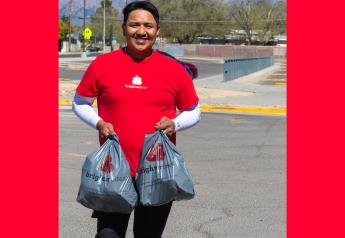Florida grapefruit: getting small and then regrouping

The grapefruit’s fall from the hallowed pedestal it enjoyed in the 1970s can’t be pinned on one single factor. Florida citrus has been bloodied by more than one hand.
With freezes in the 1980s knocking out growing regions north of Orlando, ongoing battles with citrus canker and HLB — short for huanglongbing, referring to citrus greening — in Florida over the past 25 years have caused the Sunshine State's precipitous declines in production.
The demand side has been occasionally buoyed by the popularity of the “grapefruit diet,” which first found traction in the 1930s and since then has enjoyed short bursts of revival. Citrus has always been valued for its contribution to health, most recently during the COVID-19 pandemic.
The negative side of the demand quotient has been triggered by research looking at grapefruit’s reaction to some medications, which has been publicized since the late 1980s, and gained further steam in the early 2000s. Today, the U.S. Food and Drug Administration requires that some prescription and over-the-counter medications generally taken by mouth include warnings against drinking grapefruit juice or eating grapefruit while taking the drug. Those drugs include some medications to lower cholesterol and treat high blood pressure, medicine taken typically by older people, historically the strongest grapefruit consumers.
The Packer’s Fresh Trends 2022 indicates that 19% of consumers said they purchased grapefruit in the previous 12 months. That was slightly more than radishes (17%) but behind nectarines (21%) and about half that of avocados (38%). Higher-income levels were associated with greater grapefruit consumption, with 23% of those making over $100,000 reporting purchases, compared with 14% under $25,000.
Taking stock
Just how much has Florida’s grapefruit industry contracted? And what kind of future is there for Florida-fresh grapefruit?
In 1976, Florida accounted for nearly 75% of U.S. grapefruit production. In 2021, that percentage declined to 41%, according to USDA statistics.
Florida’s grapefruit-bearing acreage rose to an all-time peak of 139,200 acres in 1997. Since then, like a slinky on steps, Florida grapefruit-bearing acreage has steadily stair-stepped down, landing at 18,870 acres in 2021. From 2004 to 2006, in the heat of the battle against canker, the industry lost more than 10,000-bearing acres annually for three consecutive years.
In 2021, the USDA said white grapefruit (including seedy) is 15% of the total, with 2,900 acres, while red grapefruit is 85% of the total, with 16,919 acres. The Indian River District has 69% of the total grapefruit acreage.
Competing regions in the U.S., in comparison, have declined in grapefruit acreage, but not at the pace of Florida.
Texas-bearing acreage, rated at 20,000 acres in 2000, was 16,000 in 2021.
California's grapefruit-bearing acreage has declined from 16,000 acres in 2000 to 8,700 acres in 2021.
The slide in grapefruit acreage in Florida has nothing to do with grapefruit quality, said Tom Spreen, professor emeritus at the University of Florida.
“There have been all kinds of tests that have said that Florida probably grows the best grapefruit in the world,” he said. With domestic and export shipments to Japan and Europe combined, Florida moved as many as 50 million cartons of grapefruit in the 1990s. “Florida was the king of grapefruit,” he added.
In 2021, Florida’s combined domestic and export shipments of red grapefruit totaled 3.19 million 40-pound cartons, with Florida’s domestic and export white grapefruit shipments totaling 180,000 cartons. Total 2021 shipments of 3.37 million cartons were down from 4.31 million 40-pound cartons in 2020, the USDA said.
Texas rio star and ruby sweet red grapefruit shipments in 2021 totaled 1.79 million cartons, according to the USDA, down from 3.98 million cartons in 2020.
“Thirty years ago, Texas was just a small fry compared to Florida," Spreen said.
California has moved to the top of the chart for domestic grapefruit shipments, with 6.43 million cartons shipped in 2021, down slightly from 6.68 million cartons in 2020.
Hope ahead
Senior industry leaders report that Florida fresh citrus and grapefruit aren’t going away. Even though the contraction of the industry may not be finished, there is hope that new and refined growing technologies will help beat back HLB and reverse the downward production trends.
The Packer interviewed several fresh citrus leaders about the Florida citrus outlook. As a generation, Florida citrus industry leaders have seen more than their share of trouble, but there is an appetite to conquer the dragon.
“I think the people that are left in the industry are really tough, gritty people,” said George Hamner, longtime president of Indian River Exchange Packers and now affiliated with Egan Fruit Packing LLC, Fellsmere, Fla. “They’re not giving up. We all believe in what we're doing.”







